Guest blog written by Colleen Betti, current doctoral candidate at UNC-Chapel Hill and long-time Fairfield Foundation friend.
In 2019, I wrote a guest blog post talking about the research I was doing on Gloucester’s schools. In the year and a half since then, I’ve excavated 54 test units at three of Gloucester’s black schools.
Woodville School is one of only four standing pre-1960 schools in the county and the only Rosenwald School still standing in Gloucester. It was active as a school from 1923 until around 1938. There was also an earlier school on the site built around 1886.
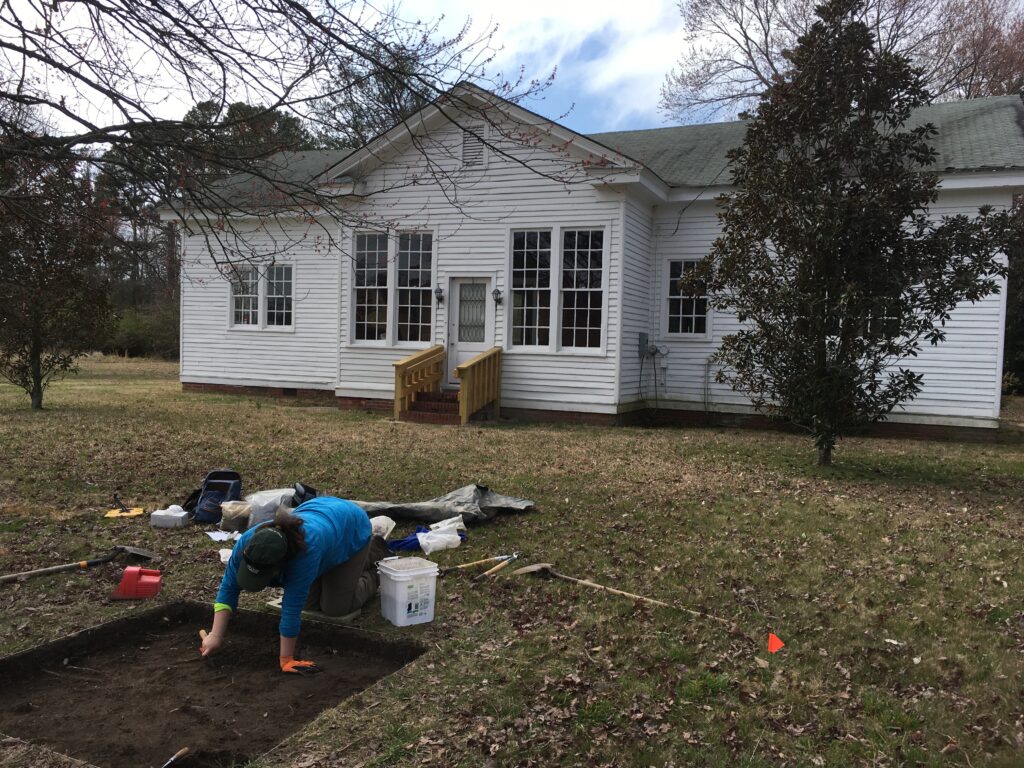
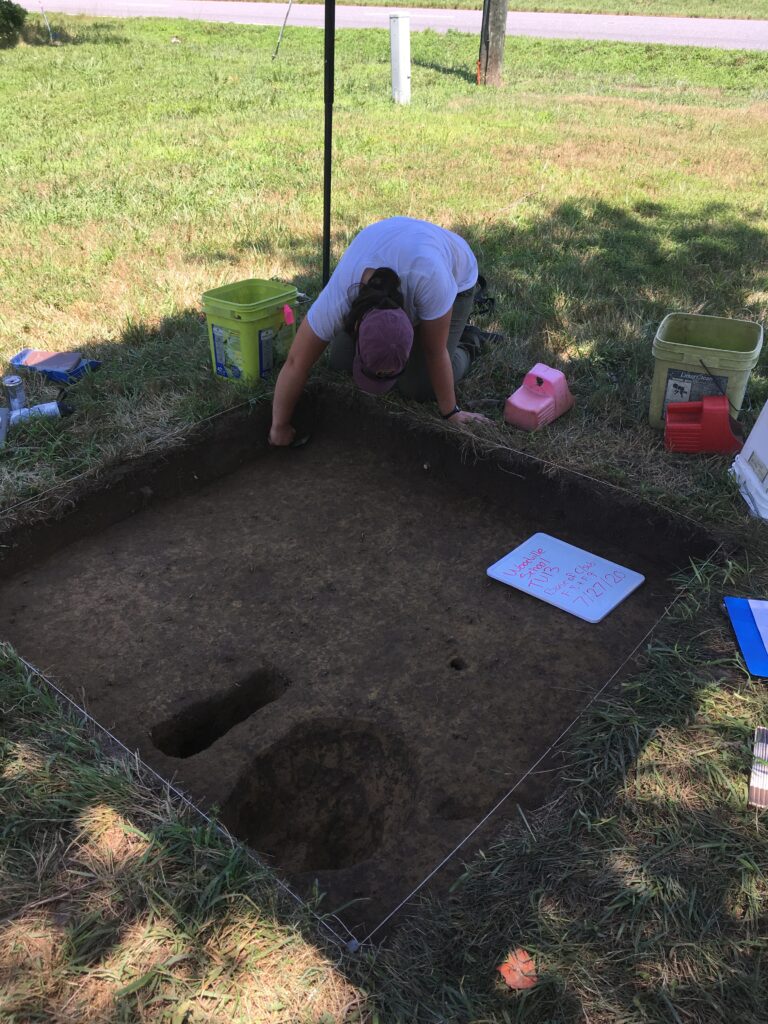
The front yard at Woodville has been the most productive area archaeologically, and most of the artifacts appear to be associated with the 1886 school. I’ve catalogued 217.5 pounds of coal from the front yard so far! While unburned coal was found throughout all of the layers in the front yard, a large quantity of burned, very friable coal was discovered within three holes, with architectural debris beneath the coal.
I am still unsure what these coal holes were (and would love to hear people’s thoughts). One hole had asphalt roofing shingle that matches the original roof of the Rosenwald School. This, along with the architectural debris, suggests that the holes were filled around the time the 1923 school was built.
Along with the coal and a lot of window and vessel glass, there have also been a number of pieces of jewelry, buttons, and beads along with combs, shot gun shells, and lead shot. School artifacts include many fragments of writing slate, slate and wooden pencils, erasers, pencil lead, and a c. 1903-1915 Seltz Liberty Bell student medal for highest average. One of the most intriguing artifacts is a 1917 celluloid calendar card.
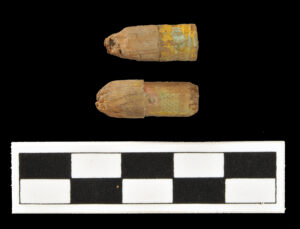
Pencil erasers 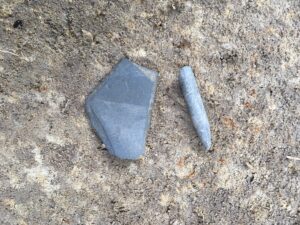
Writing slate and
slate pencil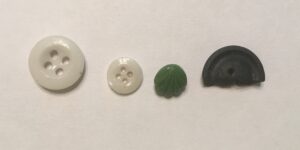
Buttons 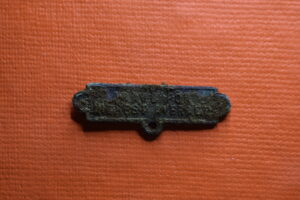
Fragment of Selz Liberty
Bell medal from Woodville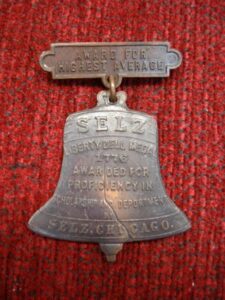
Image of a complete
Liberty Bell medal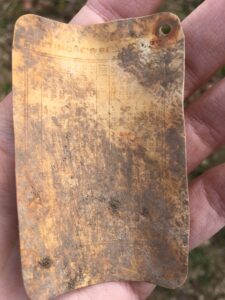
1917 celluloid
calendar card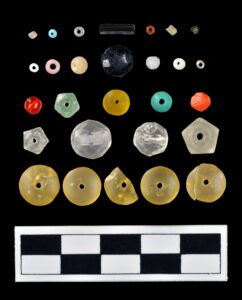
Glass beads
The Bethel School was a Rosenwald School built in 1923, which closed in 1951 and was torn down sometime in the 1950s. Excavations at Bethel have been confined to the corners of the school (where three piers have been found), the front yard, and the privies.
On top of the typical school artifacts such as pencils, ink bottles, desks, chalk, and erasers, there have been a large quantity of personal artifacts, especially combs, numerous glass marbles and a copper alloy jack. We also found part of a teacher’s pin in the shape of a pen! Outside the kitchen/cafeteria there were numerous milk bottle lids and cans, whereas outside the back left corner there were lenses of burned coal, along with melted glass, burned pencil lead, burned erasers, straight pins, and staples. This was likely classroom trash burned in the classroom stoves before being tossed out the back.
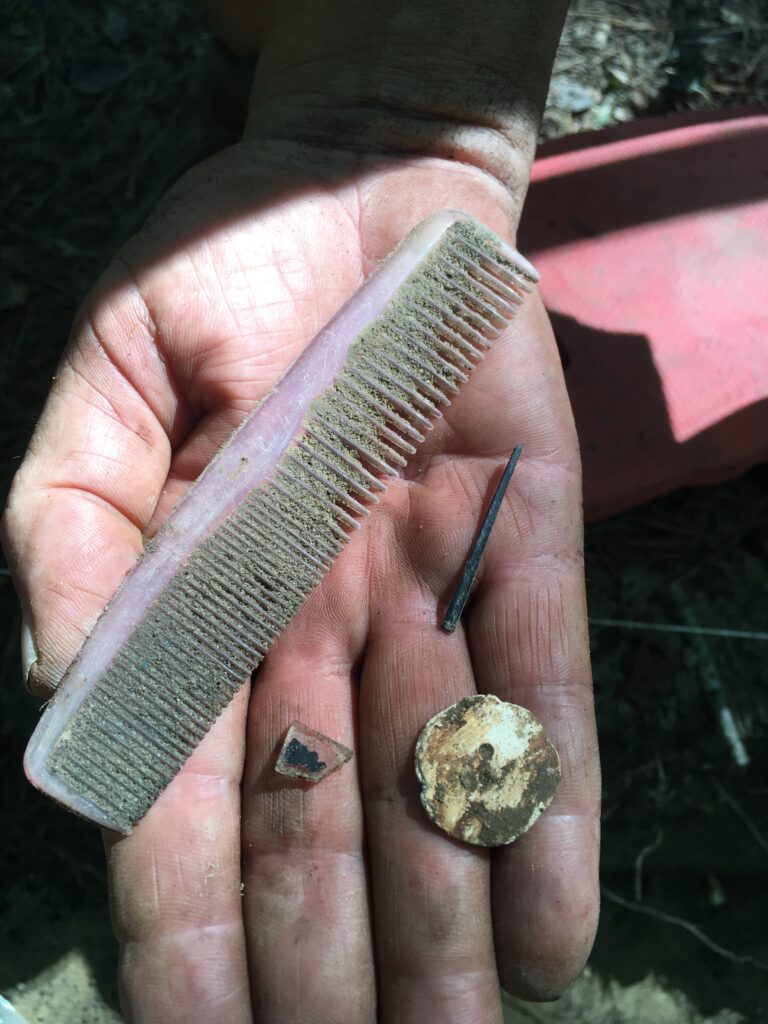
Comb and button 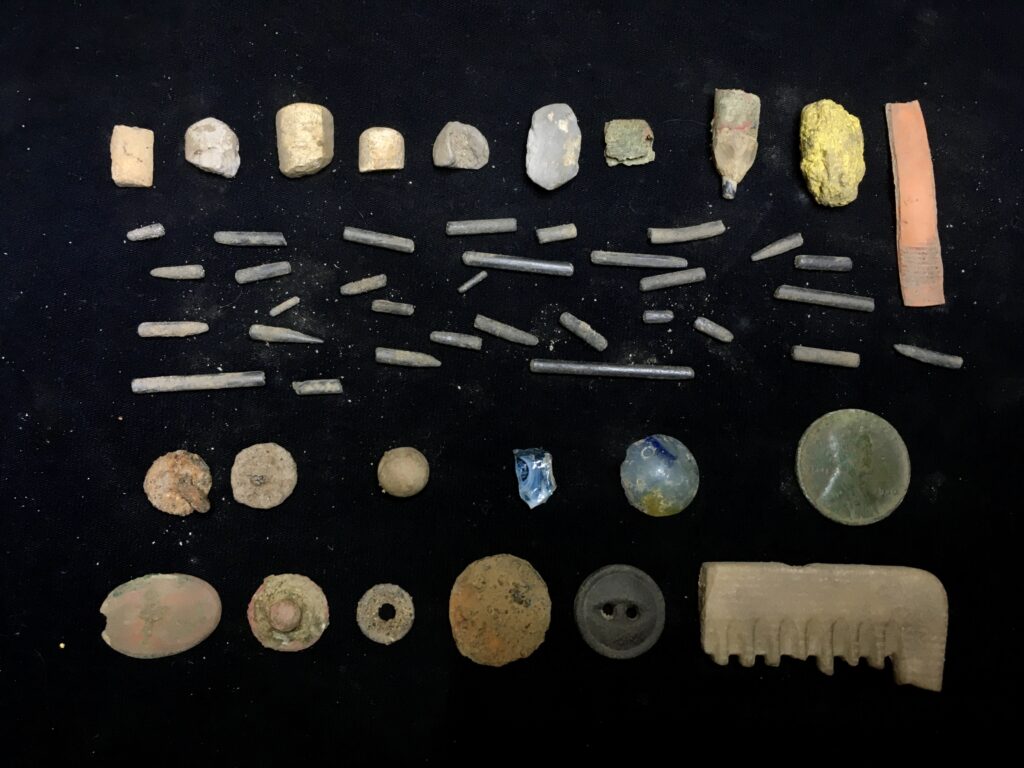
Burned erasers and
pencil lead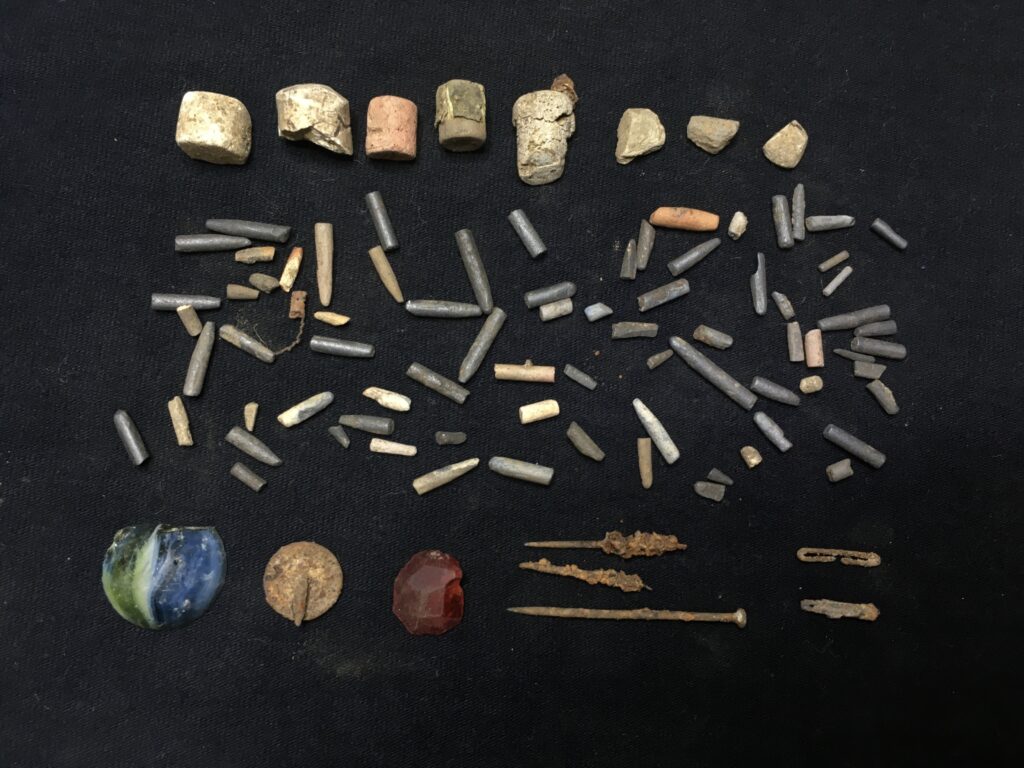
Variety of artifacts from
Test Unit 10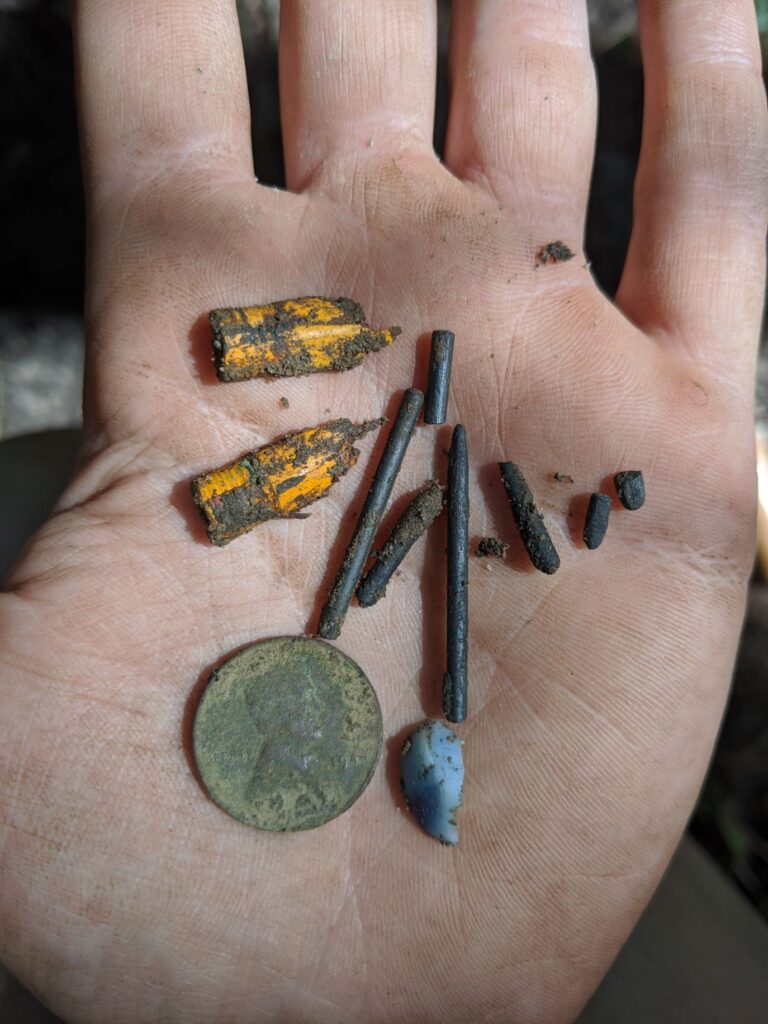
Artifacts from Test Unit 7, including pencil lead 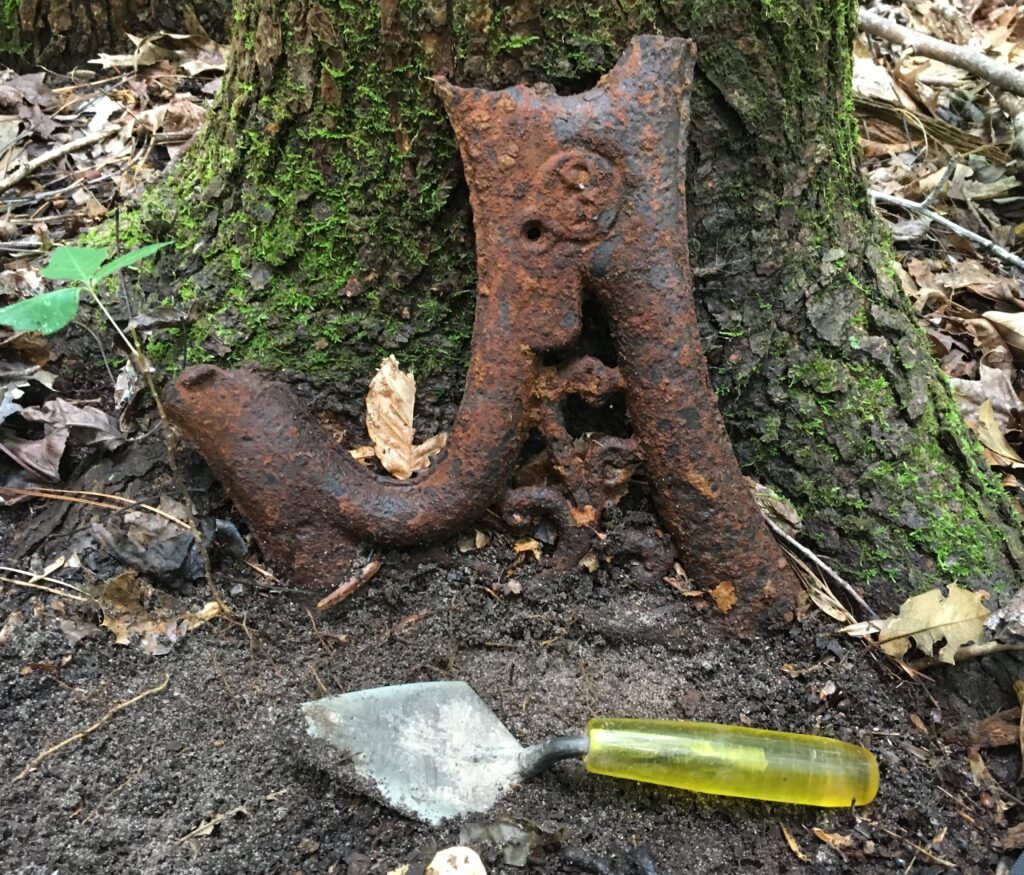
Desk leg fragment discovered near a tree 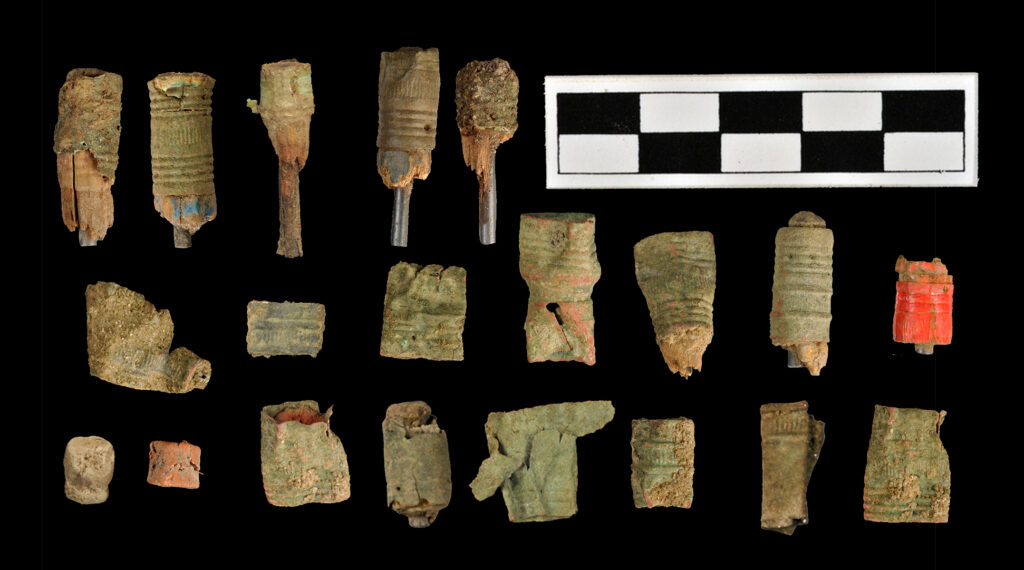
Pencils 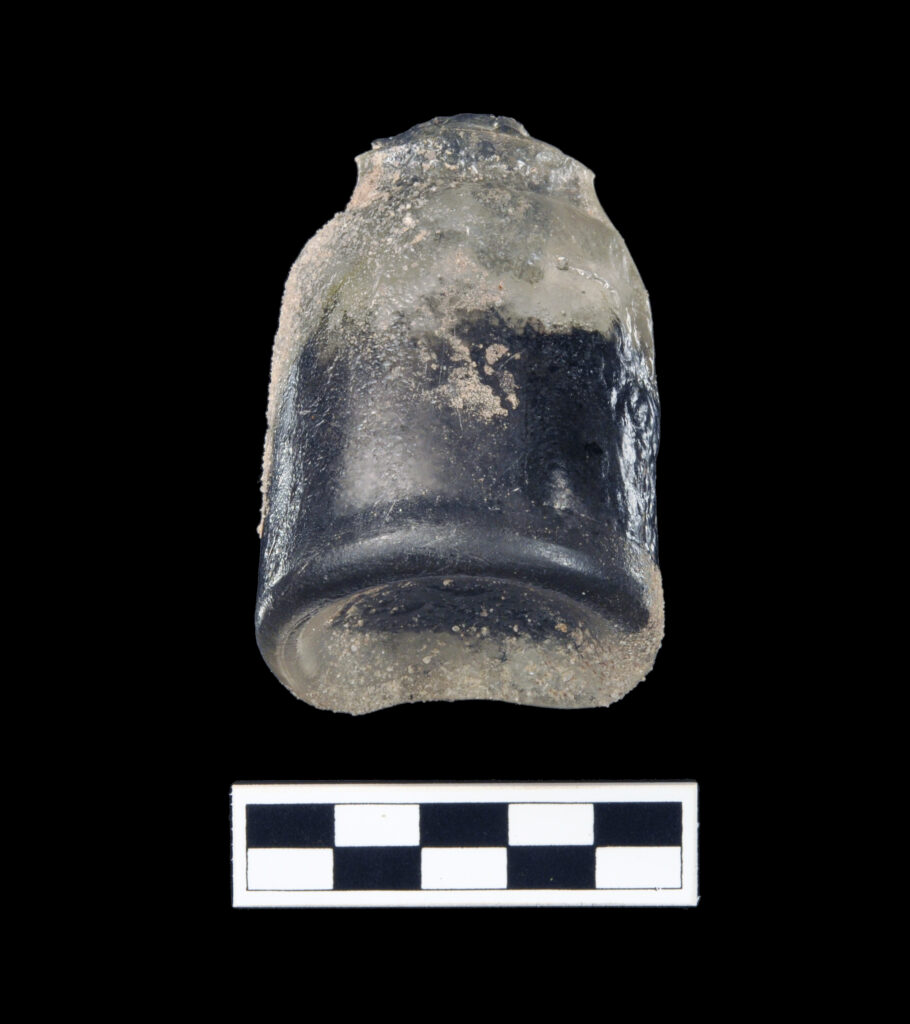
Melted ink bottle 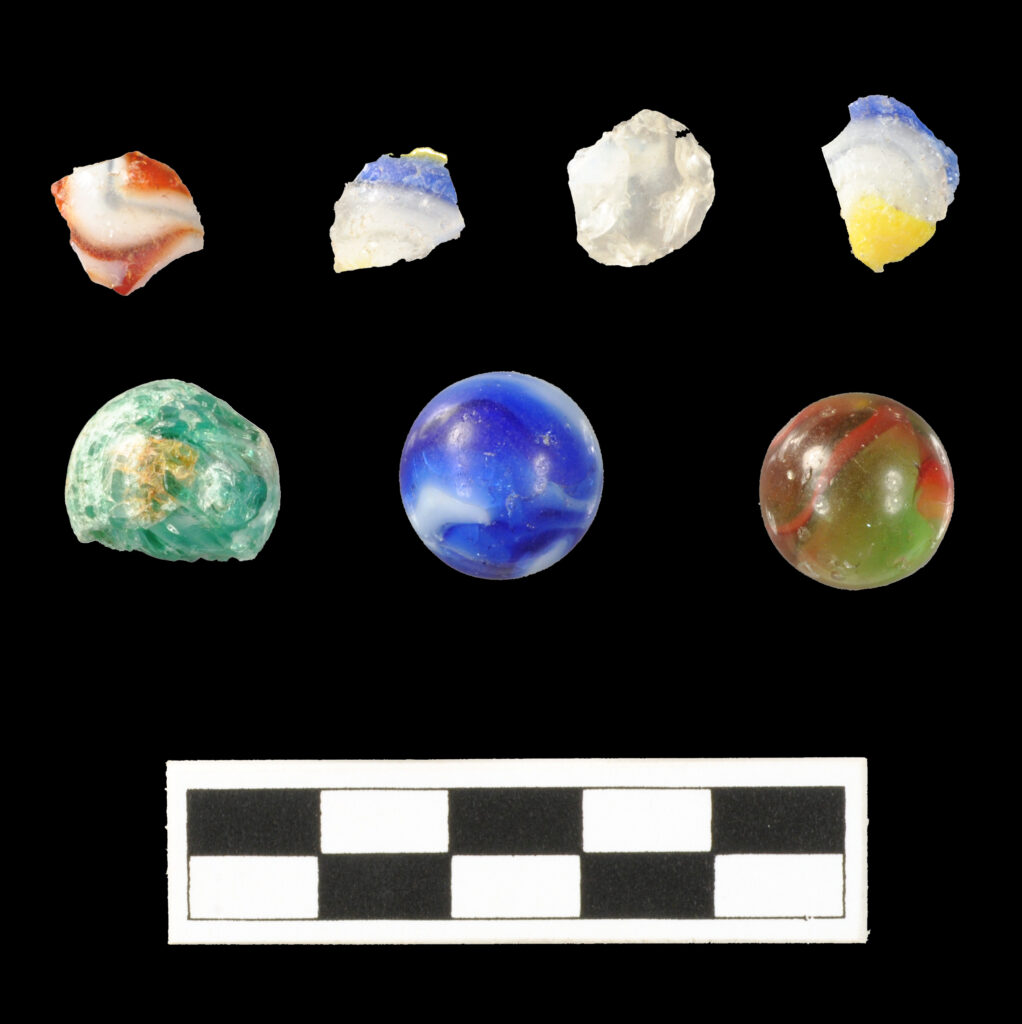
Glass marbles
The Glenns/Dragon School is the oldest and most mysterious of the three, with no known photographs. Founded around 1883, it was known as the Dragon School for the first few decades. Then after the first few years of the 20th century, historical sources began to call it the Glenns Colored School. It was a one room, one teacher school which closed in 1929.
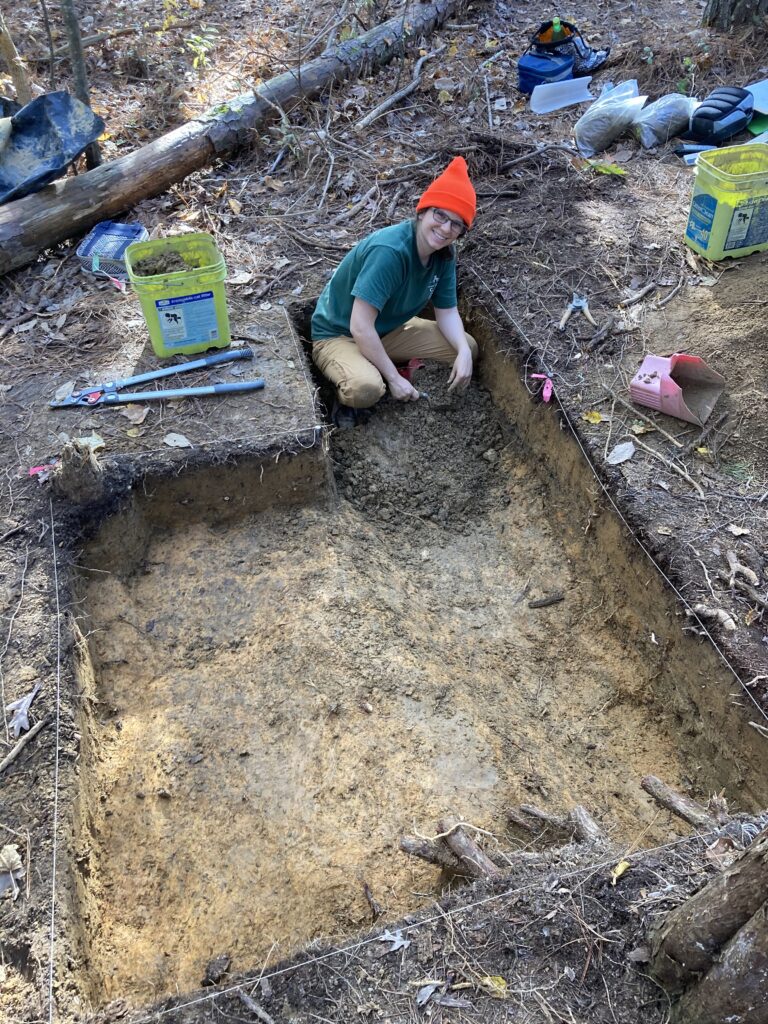
The first thing found at Glenns was a ditch about 17 feet long by about three feet wide, located near where the school is thought to have been. It was lined with white pine and filled with ash and architectural materials. One theory suggests this is a drainage ditch along one side of the school, and the 1937 aerial photos show that the school building should be on the same orientation as the ditch. While searching for the school structure, a second, identical parallel ditch was found on the last day of excavations. The school was likely located between these two ditches.
Further down the hill, we found what appears to have been a midden full of writing slate, slate pencils, pencil lead, buttons, bottle glass, a shoe, and oyster shells. There were a number of postholes of various sizes and depths in this area, possibly from a woodshed or privy.
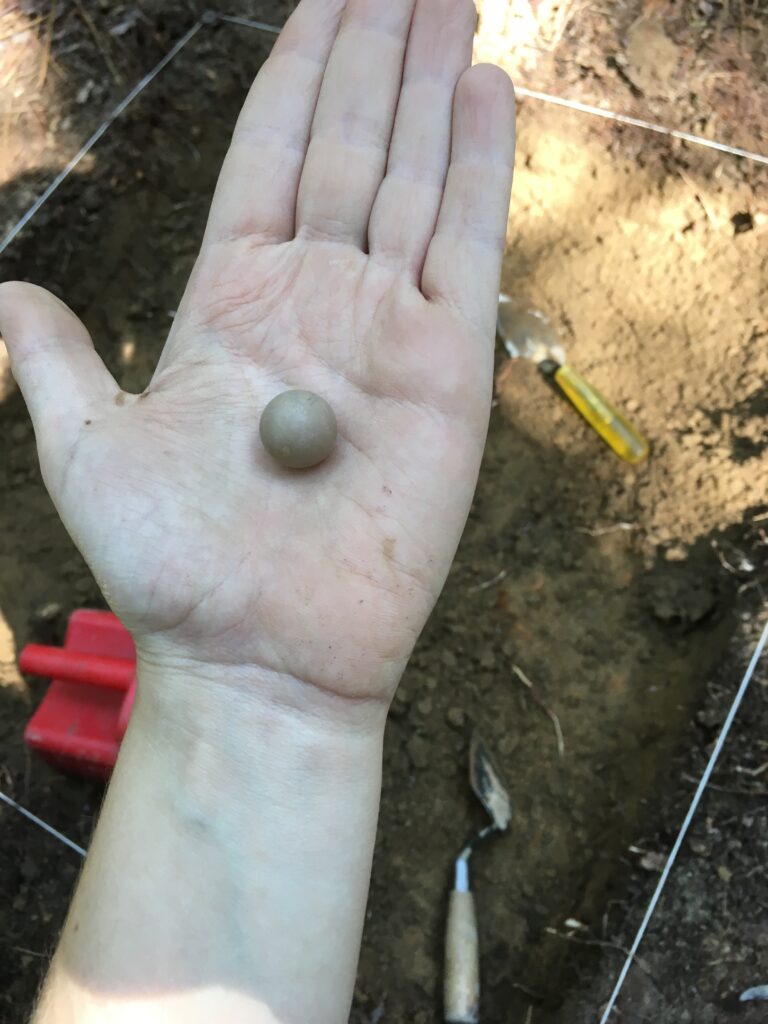
Clay marble 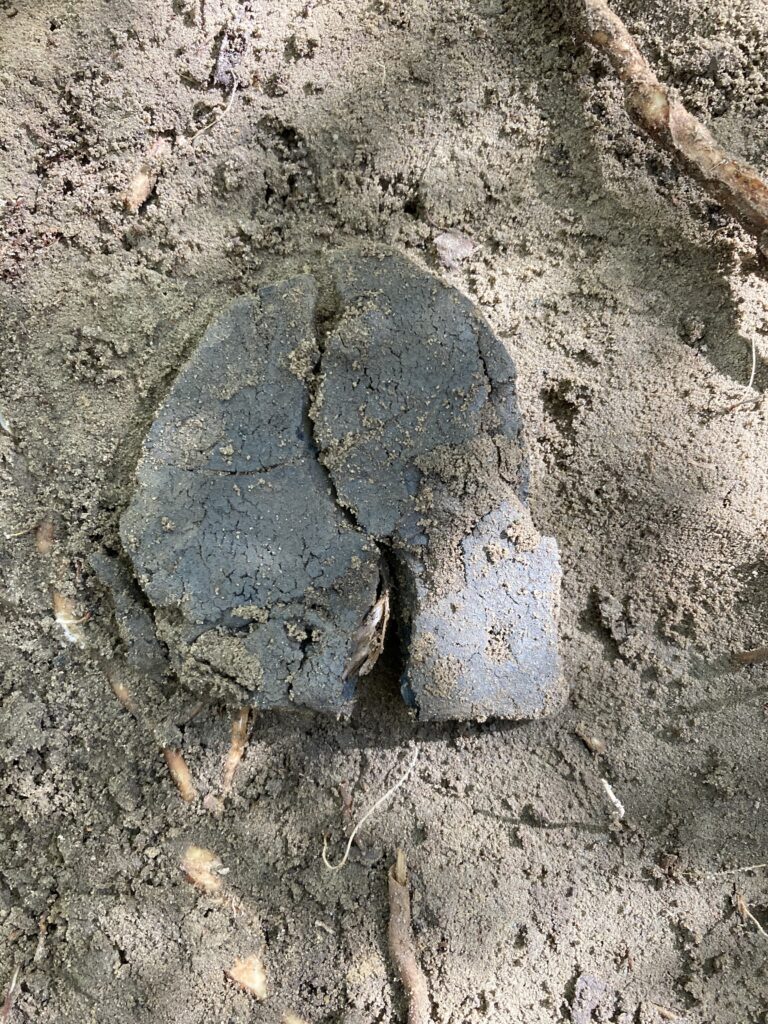
Shoe fragment 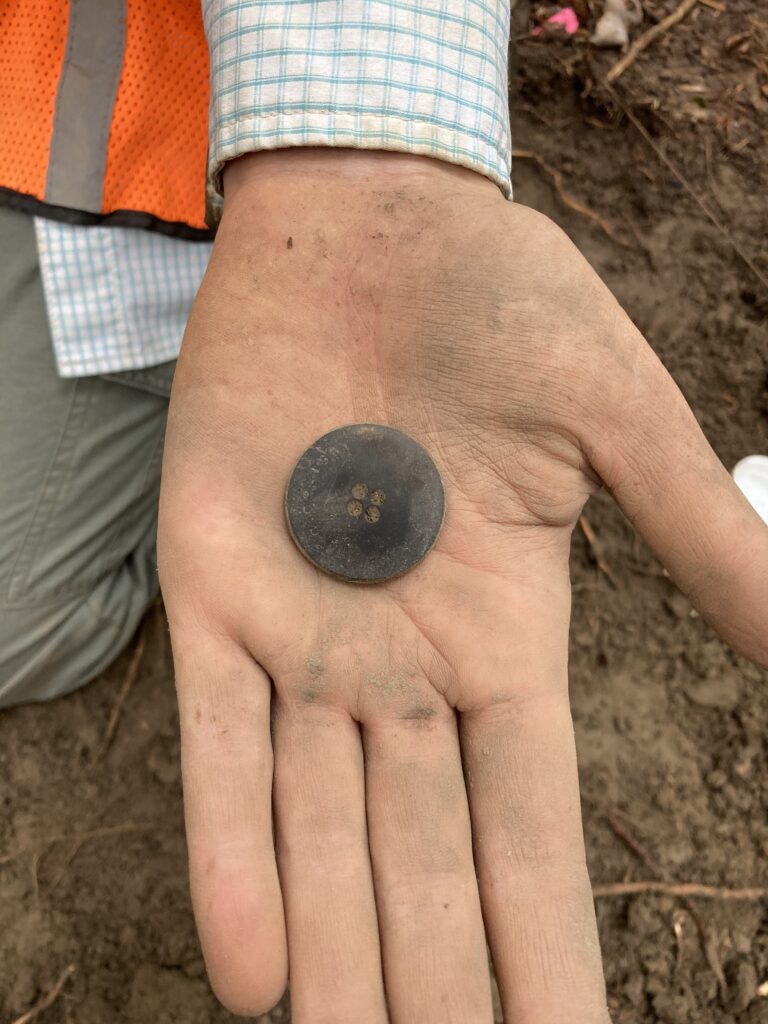
Button
There is a myth that schoolhouse sites are not fruitful archaeological sites because they only have architectural material and a very low artifact density. The excavation of these three schools is overwhelmingly showing otherwise. There is a lot to learn from the excavation of schools, especially black schools whose histories are largely missing or buried.
While the excavations are finished at these three sites, the cataloging and analysis of the artifacts is still ongoing. To learn more about what Colleen has been finding and for updates as she processes the artifacts, follow the project on Facebook or Instagram!
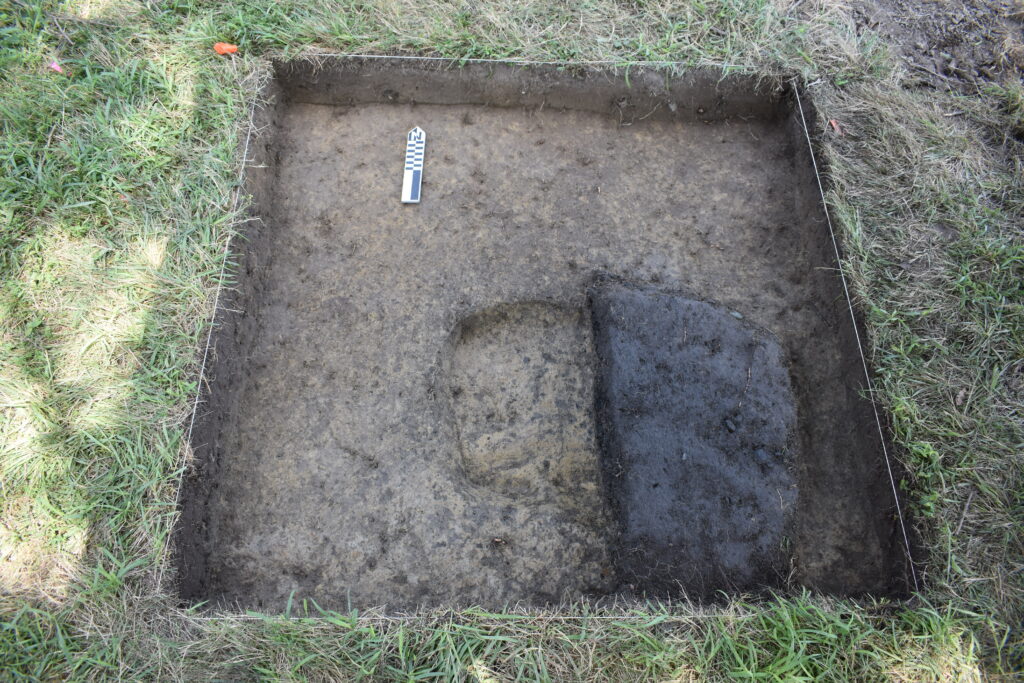
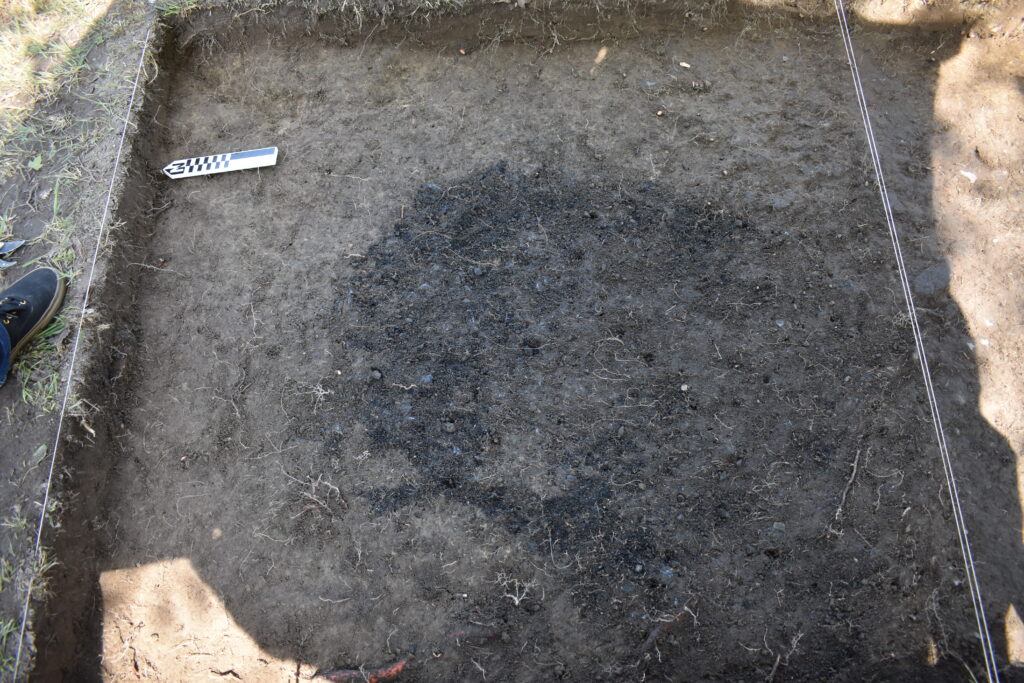
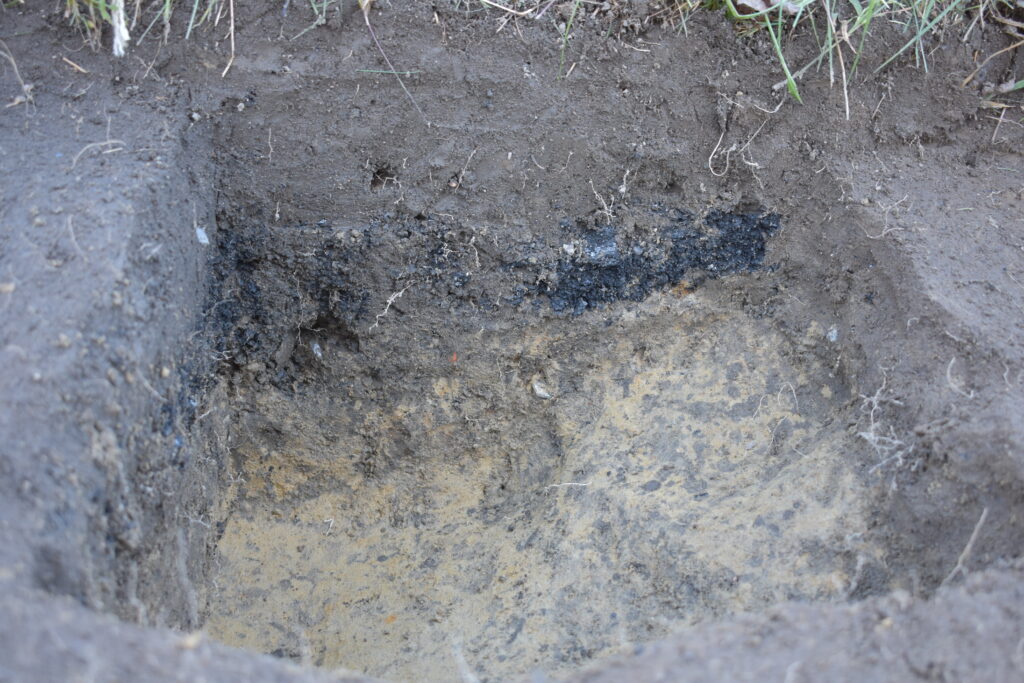
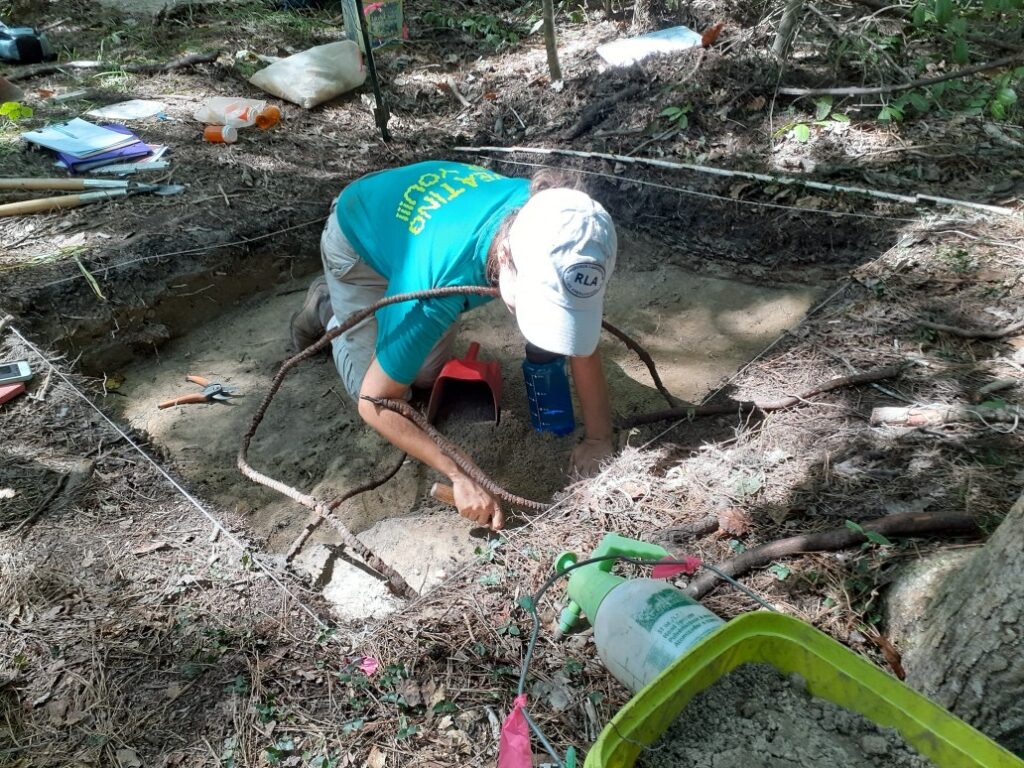
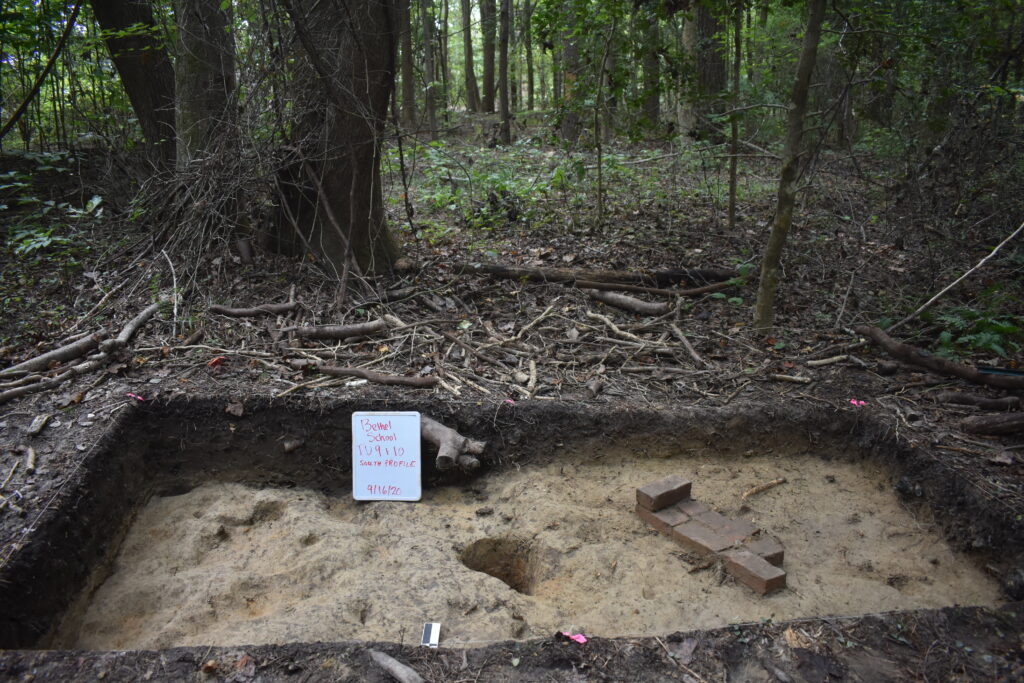
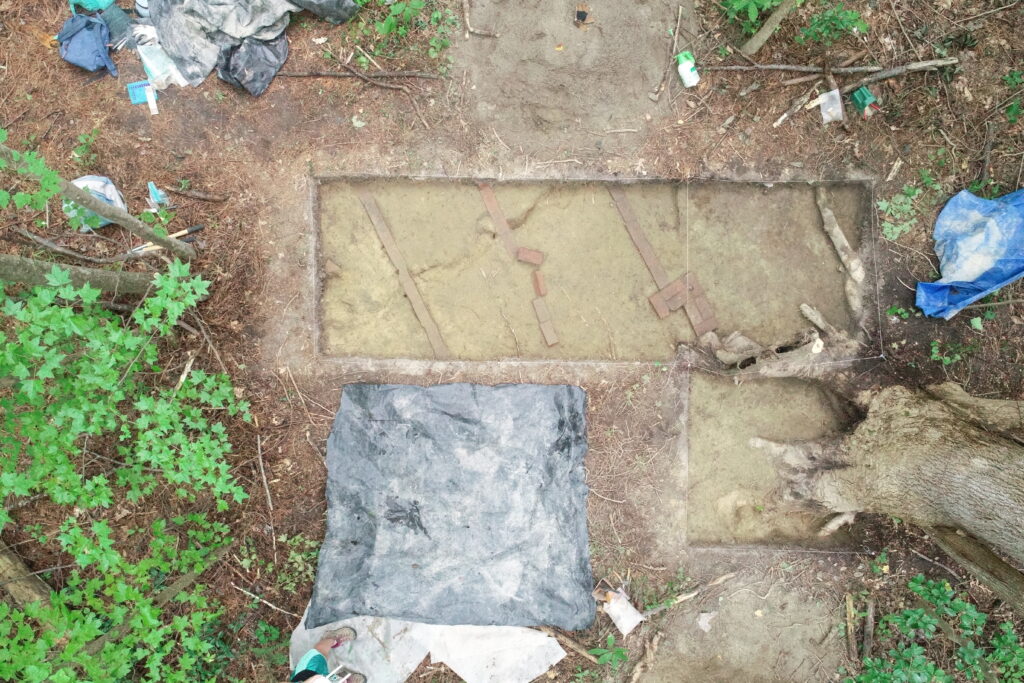
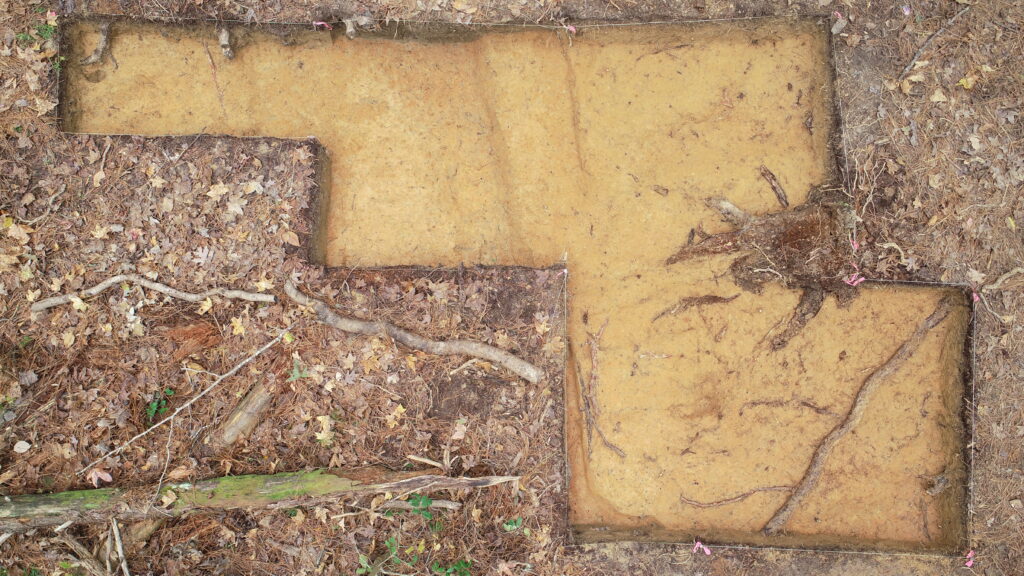
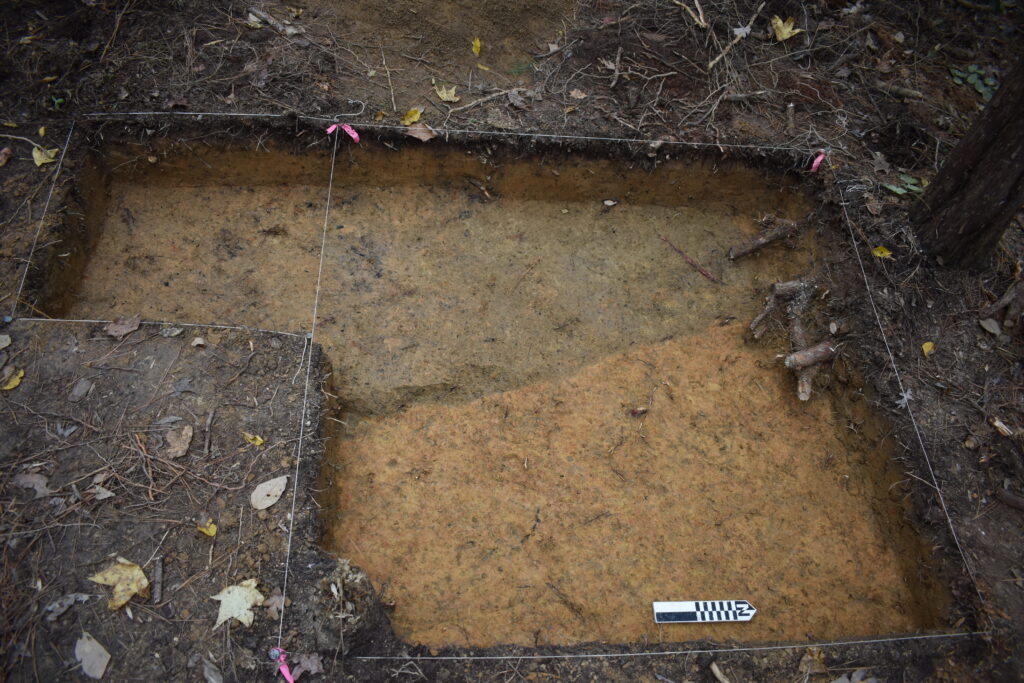
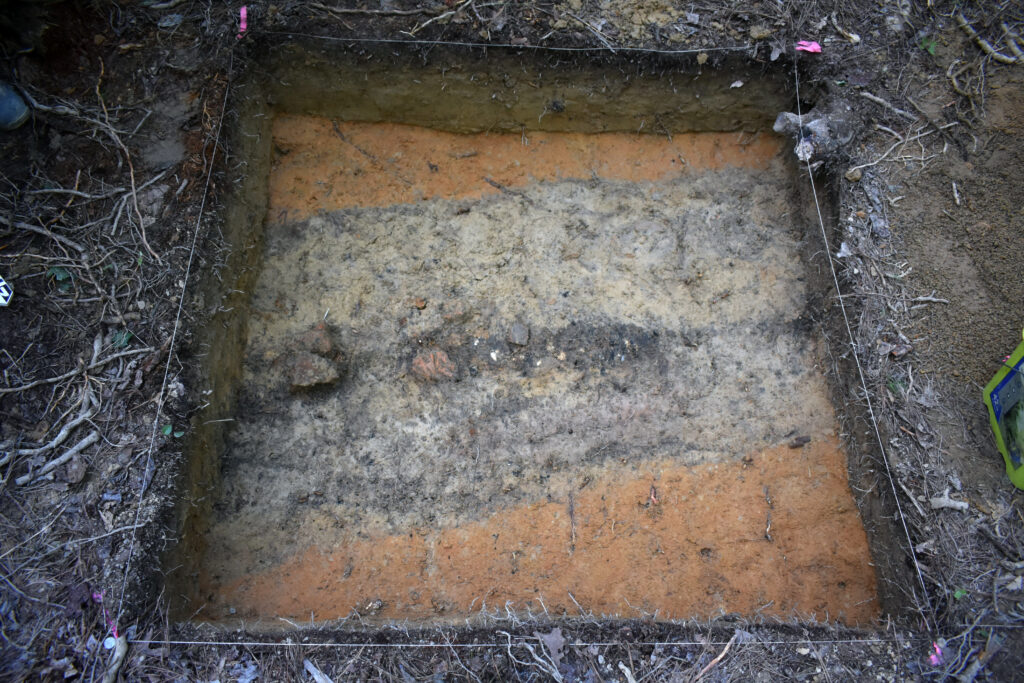
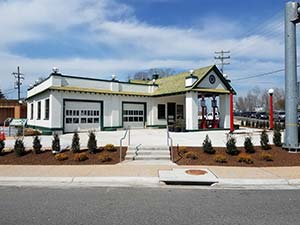
Great blog! Coal is a valuable commodity. Without a coalbin to hold it, perhaps the ditches may have been made to store it and use shingles to help keep it dry?
That’s an interesting idea. Have you heard of people doing that elsewhere?
Great story and discoveries
Here’s some interesting information I found about the coal holes. I’ve seen examples of these northeast of Virginia. Most of the coal holes have been removed by now because coal isn’t as widely used so they aren’t as necessary. A coal hole is a hatch in the pavement (sidewalk, in US usage) above an underground coal bunker.[1] They are sometimes found outside houses that existed during the period when coal was widely used for domestic heating from the early 19th century to the middle 20th century. I think that the coal hole would’ve likely been associated with the 1886 schoolhouse. The coal holes were used because they allowed the easy delivery of coal, generally in sacks and often from horse-drawn carts, to the house’s coal bunker. The location of the coal hole on the street minimized the distance the sacks needed to be carried and meant that sooty sacks and delivery men need not enter the house. Although this is a School, not a house I believe this same idea would apply.
Thank you for the information- this is very interesting.